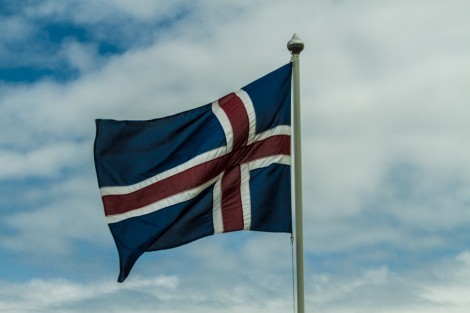
Iceland!!
This summer I spend a great week in Iceland with the 3 most bad ass chicks! We had a perfect team, with Mariann Saether being the sickest team leader, the legendary waterfall hucker Shannon Carroll, rowdy Katrina van Wijk and me.
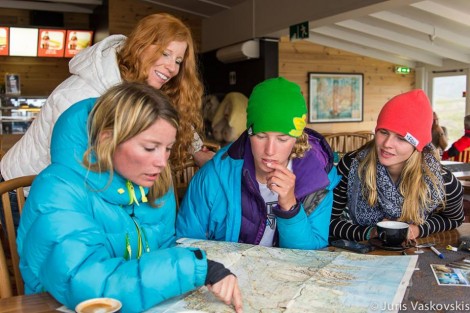
Photo by Juris Vaskovski
I flew in on Friday night and got picked up by Katrina. The next morning we met up with our crazy French Film crew and took the 1 up north to Godafoss – a 12m waterfall over a width of 30 meters.
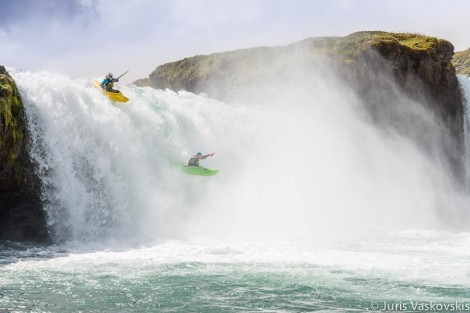
Photo by Juris Vaskovski
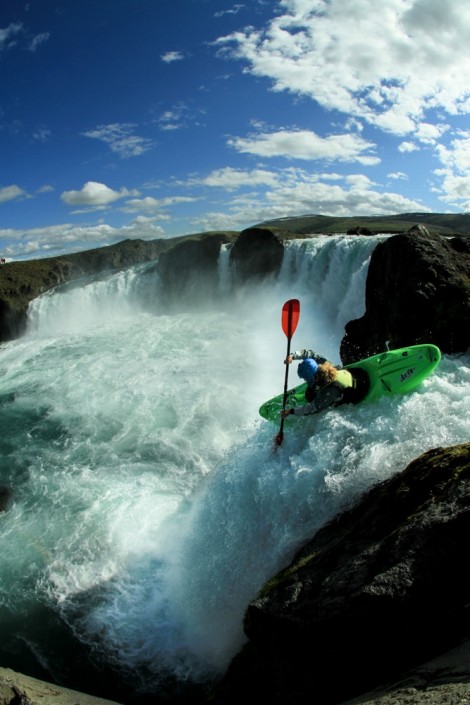
Katrina stomping Godafoss

Mariann on the left line on Godafoss
After a 5hr+ car drive we were fired up to get on the water and to ran our first Icelandic waterfall. We got a bit slowed down by our film crew, setting up the camera in between the high number of tourists.
On my second run I broke my paddle and ended up with two massive carbon splinters, which went all the way through the tip of my finger. The ladies hit the fun right line, keeping the middle line for the next day.

Photo by Juris Vaskovski
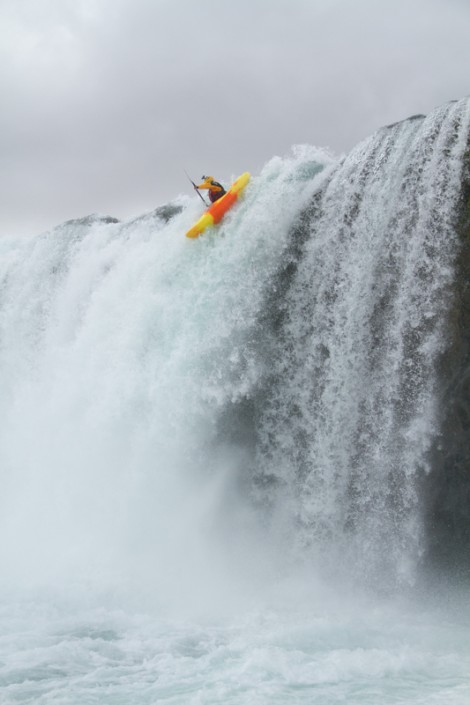
Photo by Mariann Shaether
After an amazing sleep we geared up again for our second session on the Godafoss waterfall. Once the frenchies had enough footage we continued down the river were another rowdy rapid/waterfall was.
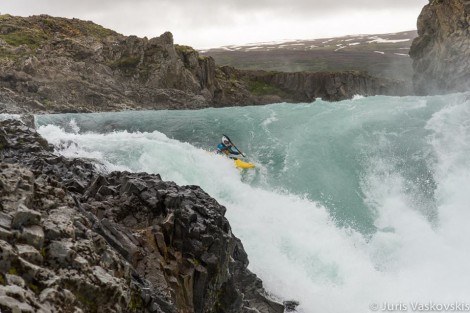
Photo by Juris Vaskovski
In the evening Mariann took us to secret hot pools, which was incredible!!

Photo by Mariann Shaether
On the third day Mariann and Shannon hit up a rowdy drop with a crazy lip on the entrance!
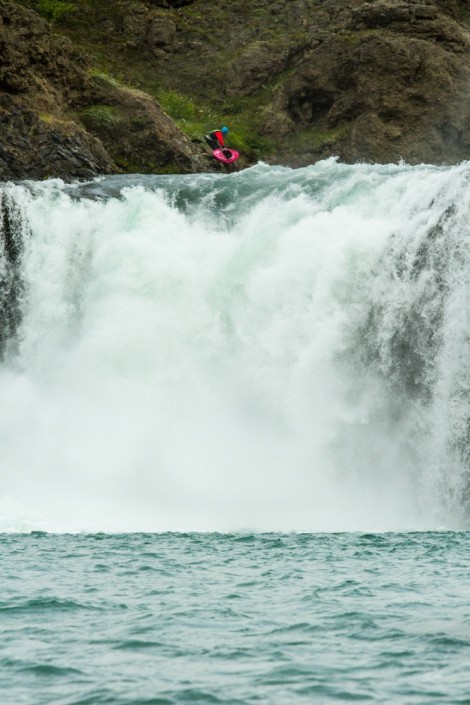
Mariann going first
After the third day the frenchies left and we continued our road trip around Iceland. Our next stop was Aldeyjarfoss, a perfect but very powerful waterfall! We had heard a lot of stories of people getting hurt by just the impact off this waterfall, with an injury count of 3/5. Shannon was super fired up to give it a go. Unfortunately we were running out of time and Shannon had to let it go and come back next year!
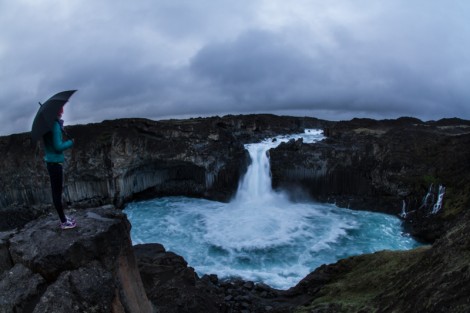
Beautiful Aldeyjarfoss!!
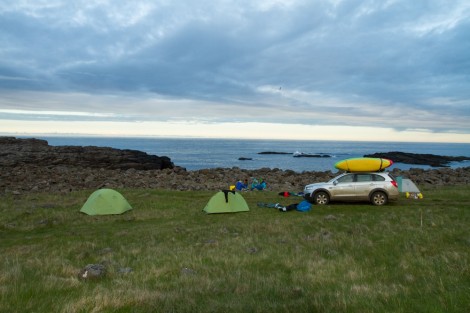
Great camp
Unfortunately the water was super low on the east coast of the island, leaving us unable to paddle the sick river runs around! On our way we met up with a super friendly local family giving us the latest updates about the rivers.

Photo by Juris Vaskovski
Iceland is beautiful it is real bare, there is still lots of snow and the massive glaciers are incredible! We stopped on the south coast to paddle between the massive icebergs, which was a lot sketchier then we thought.

Photo by Mariann Shaether
We have done a lot of sightseeing and watched so many waterfalls! Unfortunately most of them had not enough water, which forces us to come back to Iceland next year! We also experienced the geo-thermal activity by visiting an impressive geyser, mud pools and enjoying the hot springs!
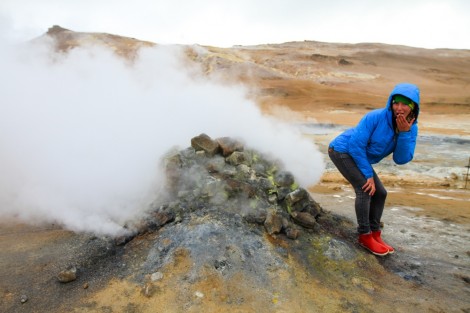
Enjoying the geo-thermal activity
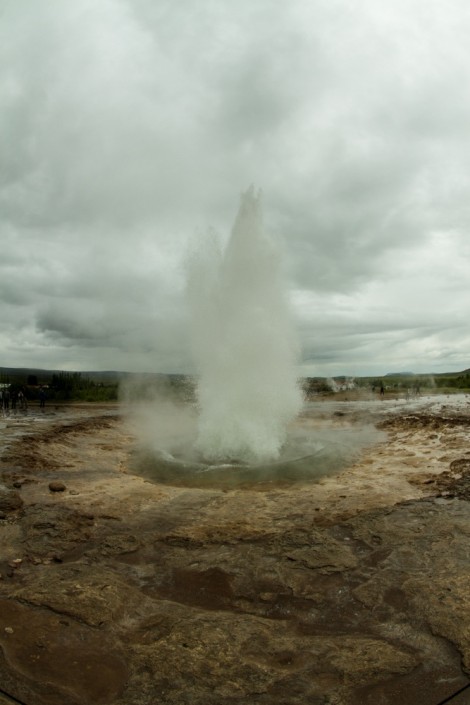
Crazy gyser
On our second last day we headed up to Thief Falls, which was low but good to go. Mariann and Shannon hit up the left line ending up with two swims and a broken paddle. Katrina and I took the middle line. It was crazy how many flies there were that day! Almost unbearable!
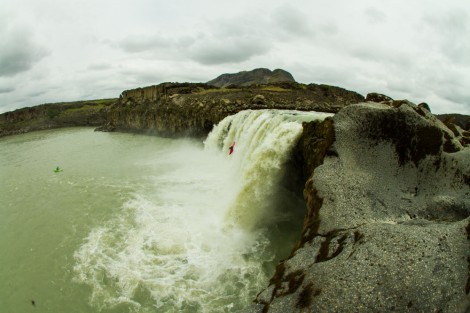
Mariann running the middle line on Thief Falls
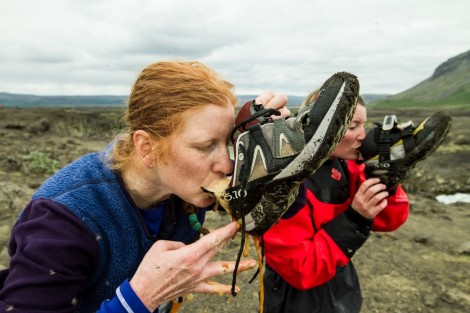
…
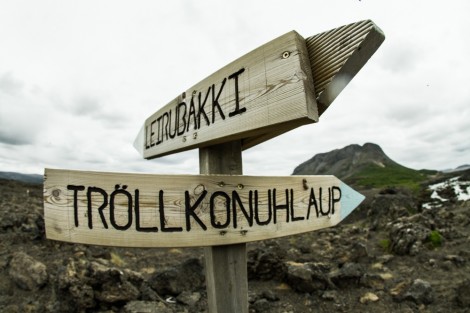
Thiefs Falls
Iceland has been serving up some goods in our kayaks! Stoked to be paddling with these rad chicks!
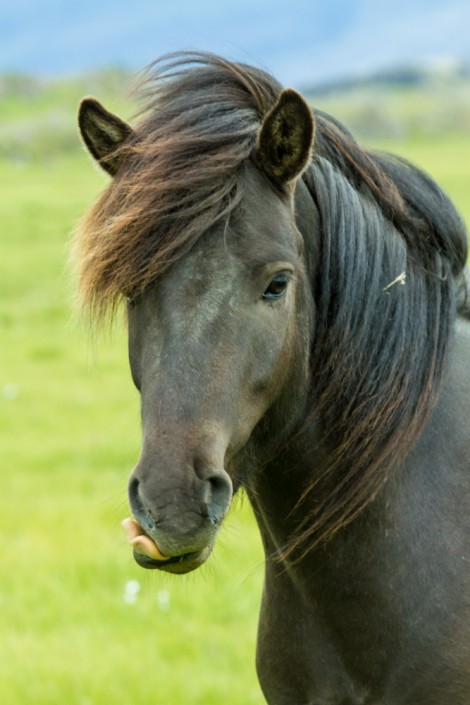
You may have already seen the video released of our London training weekend. If you haven’t here it is thrown in for good measure : thanks to Moss for this!
We had a full on weekend with our now usual 6 training sessions! We definitely are ramping it up for the lead into the worlds. Saturday started early and fairly warm (for a change) but still pretty bleary eyed! It was Slalom Saturday and on the big powerful LV water it wasn’t only our muscles that hurt at the end, slalom is a brain drainer!
We were so lucky on the Saturday to have GBR Mens Team Paddlers Matt Blue and Pas Blackwell giving us feedback and coaching tips. It always makes such a different when you have someone on the bank watching. Also we were being filmed, so best camera faces ladies!!
Giving ourselves 2 more sessions on slalom over the day we worked on big sweeping moves and tight technical courses. All the gates were ‘live’ and so we were throwing ourselves around the boat to get away from them.
Nezza working her way around the pole!
We all headed to the Family Cook House in the evening for a DELICIOUS dinner and also some Strictly Come Dancing! Sunday morning was a very early get up…but once again we had the sunshine!! Matt Blue of
Blue Paddle Fame was our coach for the Sunday. He is an inspiring tour de force!
The first session he had planned for us was a technique session in our R2s. Once gain he and Paz gave us some awesome tips and advice on how to balance our power, have the best stroke possible and Matt was even so committed he was in the water with us!!
But then Matt added another dimension to resistance training!!!
Matt was adding resistance. I think he just wanted to coll down a bit.
Getting to the other side of the lake is much easier if you walk Matt!
Our middle session was another Slalom session set by Matt making big moves and using the river and the water. Even we get a bit nervous making big crosses. One false move can cause us to flip which means we would be out of that race! Scary stuff. But Matt got us confidently high crossing and surfing so now BRING IT ON NZ!!
Here we are working the waves! HIGH SIDE!
Going for a surf…this training is such hard work

There is a raft in there I promise you.
Do we have to write everything down now, so we stop talking so much ?!
Driving through those waves.
We barely had time to breath between our second and third session (entirely our fault) which was all about river safety. It is an unfortunate fact that we need these skills as this is an extreme sport and often in a race it is only us who are going to help ourselves! So Matt had us swimming the course, making eddies, throwing throwlines to each other (Fran threw a corker right into Georgies face!! ooopss!!!). We also had to flip and re-flip the raft (something we hope never happens in a race as that essentially means you are out!) AND THEN Matt had a flat water make-or-break session to finish off with. And we thought Coach Dave was mean!
A huddle of rafters?
Do NOT lose your paddle!
Nez- Dammit I’ve been spotted! I was going to make a run for it then!
Flat water training is very important for fitness.
The weekend ended on a high!! We felt so strong and together, but we got the kick up the bum that we needed from Matt. Rest and recovery is essential and quality is important. Since that weekend most of the team has been wiped out with a cold!! Time to down the Vitmamin C and get back on it!
But now for our final interview of this racing season: Last but by all means not least, is Deb Cook. Longest serving member of the team and front left goddess:
How long have you been raft racing and what has kept you dedicated for so long?
I have been racing since 1998 when I went out to the first ever World Championships Race in Costa Rica. It was also a Camel Challenge race and the first time they had gone somewhere other than the Zambezi River. I had such an amazing time, met so many great people and just enjoyed being on the river in a team so much. I love the competitions, but also the whole thing of being part of a team and working so hard together to achieve what we do makes it really hard to give it all up! Every year I think that this will be the last time, the last competition, the last event, but then I keep on going. We are really lucky to have such a great team where we all get on and have a lot of fun racing and training together, but also loads of experience and skill in the boat, so it just seems to keep getting better – it’s hard to stop!!
How did you get into Raft Racing in the first place, there must be a good story here?
Well, back in the day when it was the Camel White Water Challenge, nations used to be invited to send teams and a group of girls got put together from paddlers in the UK and represented GB. When I was working as a raft guide at Holme Pierrepont, I heard about this and wanted to know how come they were the British team. I wanted to be the British team! So I organised a British selection event and got a team together and challenged them. We trained really hard and raced against them, but we lost!! But I then ended up working a season abroad with one of their team members, and another one of their team had dropped out so they were looking for a new member and invited me to join them. So, I did! The other girls I raced with understood and knew I had just been in the right place at the right time! So that is how I got started, and then that original team stopped racing and I took on the mission, formed a new team and here we are!
Where would you like to see the sport of Raft Racing go in the UK. How do you see it developing?
In the past few years we have started to run our own raft race events, which has been a huge amount of work, but a massive amount of fun. We have had such great support from people coming along and taking part, as well as really generous hosts and sponsors that help make the events great. The paddling community have really enjoyed coming and doing something different, as well as complete newcomers to the water who have now started their own teams! Next year we have four events planned, as well as an Alpine training camp, which is really exciting. The BCU have awarded us some funding to buy more equipment to make these events even better and help more people access sport, so things are developing and the arrival of of youth and junior teams means that the sport is becoming more sustainable and feels like it has a real future. Hopefully we can keep building on our success at home and Internationally and create something that more people want to get involved with, and that will attract more sponsorship so we can ensure we remain a force to be reckoned with as a nation!
You have competed in so many different sports. What is it about competing that you love so much?
I have always enjoyed competing as a team, I find it much more motivating knowing that your team mates are relying on you to do your absolute best. It is an amazing feeling when you get a good result and everyone is buzzing because they know they have given it their all.
It makes getting off the sofa and going for a run or a training session easier, as you know there a six other girls out there having to do the same! I love the competitions and the buzz of the events, sitting on the start line and getting ready to paddle as hard as you can and put all that training to good use! I love pushing yourself to the limit and it is always amazing what you can do when the element of competition comes in! Suddenly there is just that bit more in the tank!
How has the GB Womens Raft Team changed over the years?
In many ways we haven’t changed that much, we have managed to keep a team that is really close and we are all really good friends. I have definitely made life long friends that I will always keep in touch with and have adventures with. We have always managed to maintain the fun and enjoyment, but I guess the main difference over the years has been the level of training and dedication. We have always been dedicated, but the level of commitment to the team now is incredible. Everyone trains so hard, not just at the weekends that we meet up at, but also every day of the week in between. Having a coach has made a huge difference to us as a team, and when there is someone willing to give up their time and energy just to make you better a as team, it definitely makes you more committed and determined to be the best you can be.
Most memorable rafting experience?
There are so many, it is hard to choose! Team GB won double gold (men’s and women’s team both got the gold) in the Head to Head in Austria, and then again the next year in Bosnia. It really felt like we were finally getting recognised as teams to look out for which felt amazing. We walked into the marquee for prize giving in Austria and all the teams stood up as we entered and gave us a standing ovation – this was amazing as some of the best teams on the world are based in Europe, and there they were cheering us! In Bosnia when we won the double gold, we were interviewed live on tv, featured in the national newspapers and everyone wanted to shake our hands, have their photo taken with us and generally just be a part of us! Incredible! So many more memories that will last forever, but it is always just such a proud feeling to be walking in the parade at the opening ceremonies to these events, wearing our kit and flying the flag, representing your country!
Most memorable moment with the team?
It’s difficult to say, as the team has constantly changed and evolved. However, the team as we are now going into this World Champs feels stronger and fitter than anytime before and I am really proud of how we have all stepped up to the mission. Last year we went to the European Champs in Czech Republic, and for two of the girls it was their first competition, yet we had our most consistent results ever! We got to the bottom of the downriver endurance and had raced the best race ever, sweet lines, well paced and held off the Belgians who were on our tail all the way down the river. Although we didn’t get a medal (we came 4th), it felt like it didn’t matter because we knew we had raced the best race we could, and that is a great feeling!
Thanks Deb!
Words Fran
Photos: Fran and the Team.

Als Mitte des Jahres die Einladung von der ACA (American Canoe Association) zur ersten Swiftwater Rescue Conference ins Haus flatterte, war ich nur mäßig interessiert. Ist ja auch nicht gerade um die Ecke und ich hatte bereits einen Trip geplant. Als ich dann aber die Presenter-Liste durchging, sind mir fast die Augen ausgefallen. Kaum einer der Referenten stand nicht in meinem Buchregal. Es waren fast alle versammelt die in den 80er und den 90er Jahren maßgeblich an der Entwicklung der ersten Wildwasser-Rettungstechniken mitgewirkt hatten. Ergänzt durch einige hochrangige Vertreter der jüngeren Garde. Angemeldet waren Slim Ray, Charly Wallbridge, Les Bechtel, Palm Dillon, Sam Fowlkes plus Mike Mather, Jim Coffey, Walter Felton und Justin Padgett . Unterstützt von einer Truppe altgedienter und weniger altgedienter Instructor-Trainern, die international weniger bekannt sind, in den USA aber durchaus Kultstatus besitzen.
Der Entschluss stand schnell fest, der Flug ebenfalls schnell gebucht und ab ging’s nach North Carolina in die Appalachen. Nicht weit von den Nantahala Falls entfernt, dem Austragungsort der diesjährigen Freestyle WM.
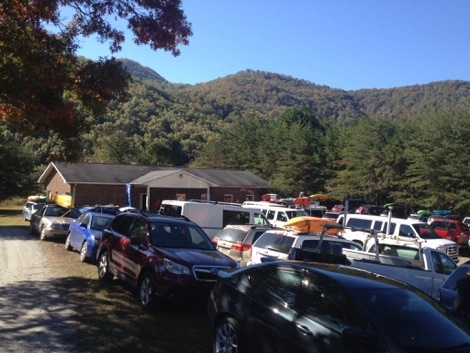
Das die Organisatoren um Sam Fowlkes den Tuckaseegee als Konferenz-Ort ausgesucht haben war naheliegend. Kaum irgendwo in den Staaten ist die Dichte an Paddlern und Instructoren so hoch. Witzigerweise wohnen am Ufer des Tuck’ auf einer Halbinsel in einer Flussbiegung ausschließlich aktive Paddler , allesamt ACA Veteranen, allen voran Sam mit exquisiten Schulungsmöglichkeiten auf dem eigenen Grundstück. DoubleTrop und SlingShot sind die wohlklingenden Namen der Rapids.
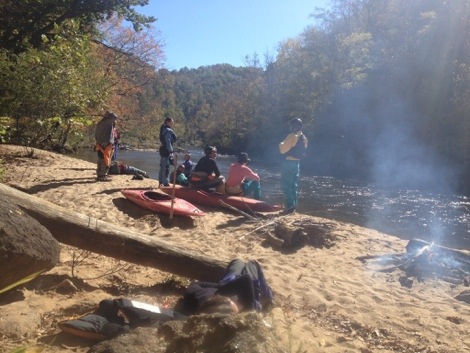
Ziemlich cool war der ausgestellte Simulations-Tank. Mit mehreren Einsätzen, vom Strainer über das Wehr bis hin zur Steinfromation, konnte sehr realitätsnah simuliert werden.
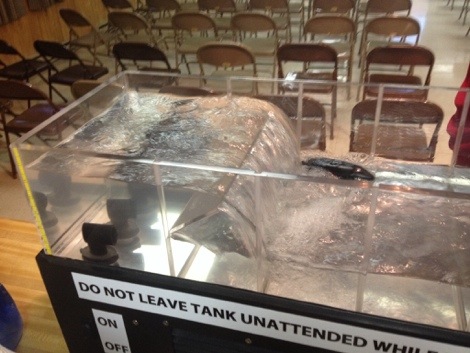
Alles in allem eine sehr hochkarätige Veranstaltung mit extrem hohem Niveau. Klassisch Amerikanisch natürlich mit Bankett am Samstag. Charlie Wallbridge war der KeynoteSpeaker und hat ziemlich aus dem Nähkästchen geplaudert. Am Freitag gab’s ne Presenterparty zu der ich als einziger Europäer und Vertreter der ACA Europe auch eingeladen war. Da verraten wir keine Detail 
Im Übrigen wurden auch immer wieder die Rolle der Europäer, allen voran Horst Fürsattel und der AKC, betont.

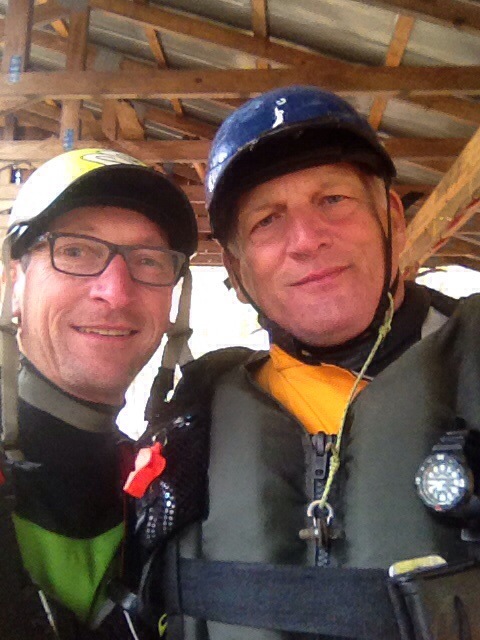
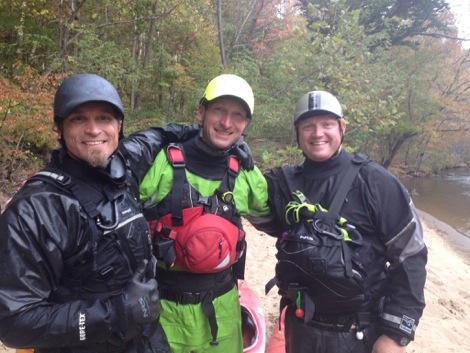
The sea kayak festival on Anglesey was again well attended this year with paddlers from all over Europe attending
The weather was too say the least challenging with stormy weather href=”http://79.170.40.166/palmequipmenteurope.com/blogs/wp-content/uploads/2013/08/image1.jpg”>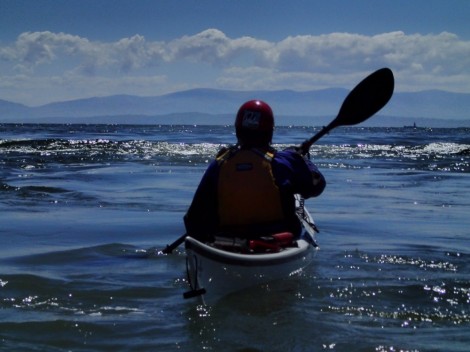 her for most of the festival.
her for most of the festival.
The coaches were having to work hard to find the right locations to suit courses and clients and it got busy in the straits
However some Danish clients stayed on and after dodging weather again we were rewarded with a lovely day around Puffin Island
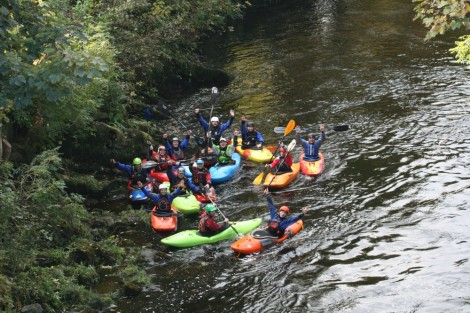
An Amazing few days for one of the main events of the Irish kayaking calendar @ the 2013 Crana Canoe Weekend in Buncrana up in Lovely North West Donegal, run by Adrian Harkin and his lightning sharp crew@ justkayak.ie.
There was something for everybody, and there was no shortage of smiles and laughter as everybody brought great inspiration and good vibes to the days. The venue is ideal as it’s guaranteed dam released water for these two days of the year and all happens within close proximity of each other so great for spectators also.

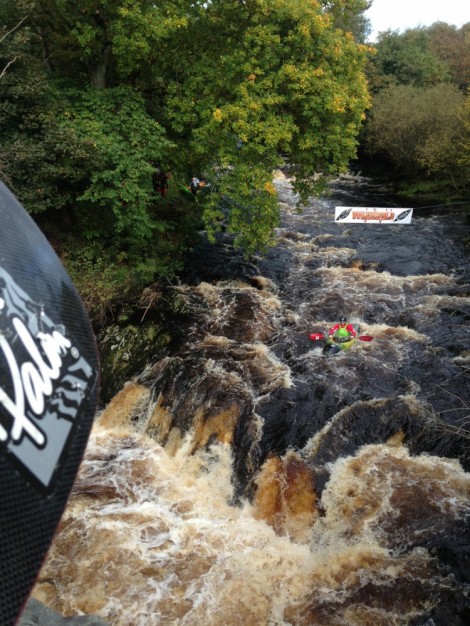
We were there running coaching clinics and to have the craic and join in the events. The mighty “Palm Throw Bag Olympics “ were in full swing where folks have to run through a wild throw bag assault course and winners being awarded the big prizes.

There was the first Irish rafting race with teams being drawn in from all different disciplines to go for gold.
The First Dagger Dash took place. A Le-Mans style running mass start around a course and then a 1km blitz down a whitewater course. Folks trying to gain advantage by not snapping their decks on in the maddness at the put in were awarded a slow sinking to the bottom mid course.
An incredible event for juniors with all classes catered for with slalom, down river, boater X, freestyle and coaching clinics, all held on the easier pieces of water at the venue.
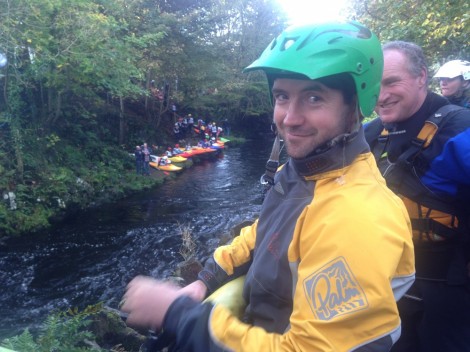
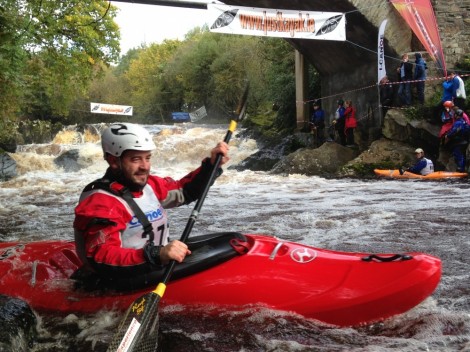
River rescue clinics and intermediate and advanced white water coaching clinics were being run throughout the two days covering everything and anything.
The Main event is the Boater X. It is run on the Sunday. The course is about 800m long, starting out with a flat section sprint in to a few rapids and as the river squeezes it slingshots you into the mighty “ Claw”. A double drop rapid with various lines all with various outcomes. Needles to say, great spectating and some competitors left with permanent side partings and their buoyancy aids on backwards at the finish line.This years winners were Slalom King, Cieran Heurteau, just back from a top 15 result in the Sickline world championship.The ladies crown was taken by Laura Griffin showing the stylish lines in her Dagger Mamba.

A full list of results for all the events can be found @www.cranakayakevents.com
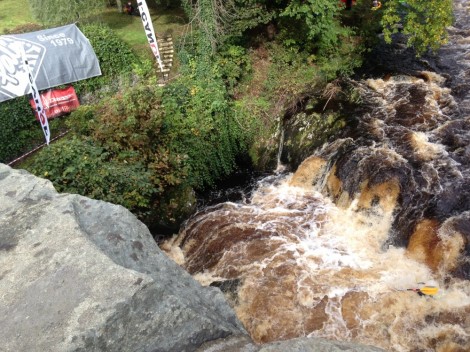
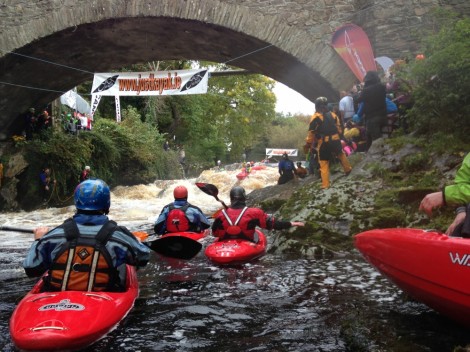
A really fun event,with great people, good laughs and some great racing. It was really magic to see so many juniors out there charging. Big thanks to everybody getting involved and bringing all the positive energy to the clinics and races, to Adrian and crew@justkayak.ie for running such a smooth event and looking after everybody so well and thanks to Shane @progressive distribution for taking care of the troops and having all the toys at hand! It was great to be there with the Palm/ Dagger crew, looking forward to next year already. All info on http://www.cranakayakevents.com Put it in your calendar for next year.
Dave Carroll
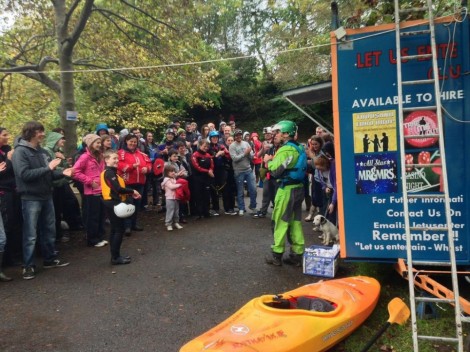

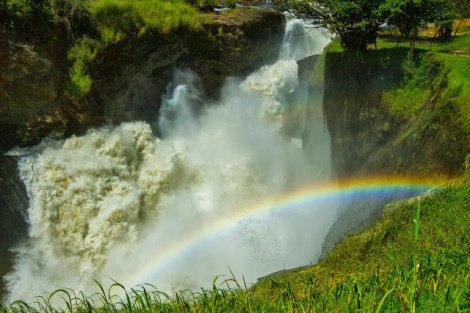
Murchison Falls is a well renowned place in the kayaking world. Committing, full on and in the outback of Uganda’s Africa. The Murchison section on the Nile has the largest concentration of Hippopotamus and crocodiles on the planet, plus some other epic wildlife such as elephants, lions, hyenas, snakes and buffalo’s. The whitewater is epic, more than 1500 Cubic meters of water twist and turn their way down countless blind channels launching off unscoutable horizon lines, passing by all elements of the African wilderness, which meant being on constant edge 24 hrs. a day.
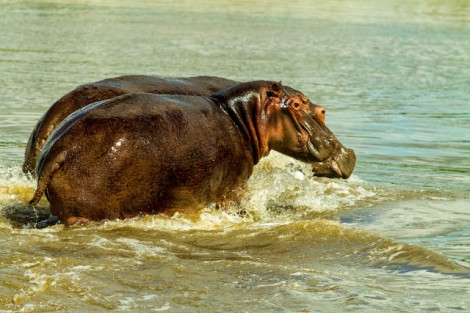
Flying into Uganda I was nervous and apprehensive, due to the stories of countless hungry croc charges and hippo attacks. I wasn’t sure at all if I was keen on this trip.
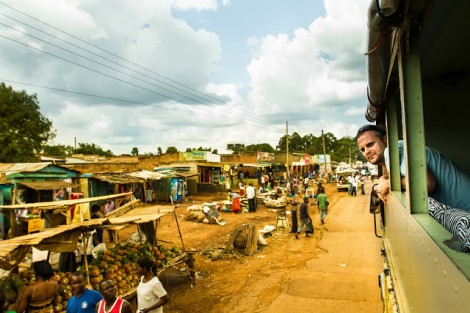

Arriving in Jinja, we caught up with Trip Leader Anton Immler. He has done this trip twice before and provide us all the useful and interesting information we wanted to hear and not to hear.
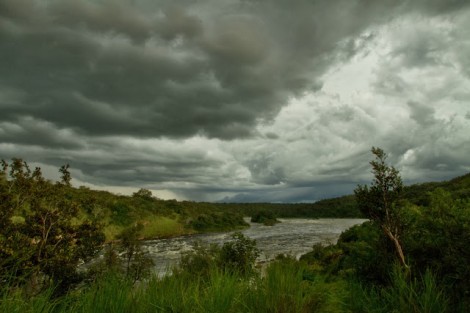
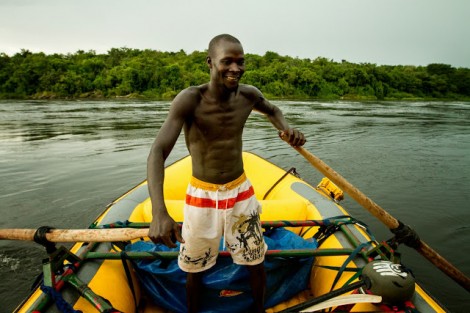
After 3 days on the commercial section of the Nile around Lake Victory (The source of the Nile), learning drills, talking about wildlife and whitewater scenarios, swimming rapids and first aid, we were ready to set off to one of the most intense experience of our lives!
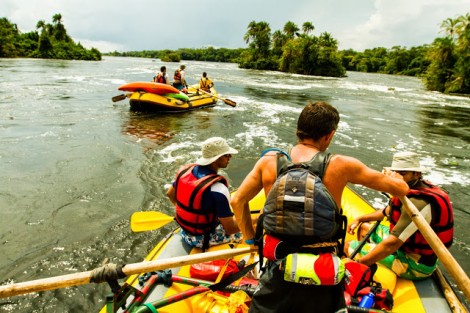
An 8 hours drive in TIA Adventures massive 4×4 Army truck, brought us to Kurma Falls and to one of the only 4 bridges crossing the Nile. Here we were exposed to the raw power of this section. The entire river squeezed between a 50m riverbank making huge wave trains, surging holes, and boily messy rapids.
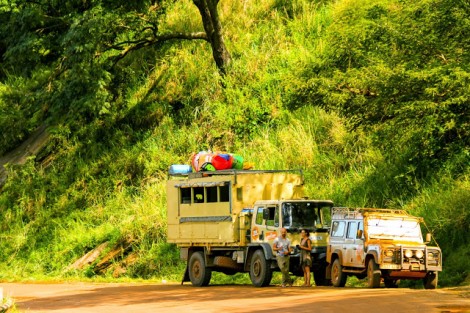
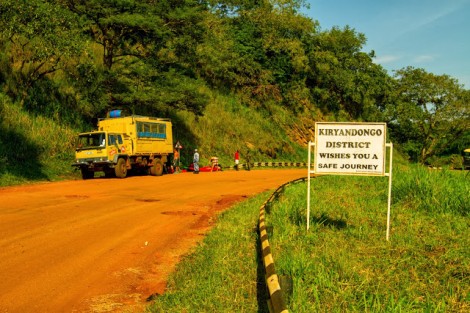
We packed all our gear the day before to be on the water the next day as early as possible. Rafts were pumped and loaded. Spare oars, water pumps, air pumps, sat phones were checked, GPS’s hidden away, cameras, food, tarps, matches, maps and the kitchen.
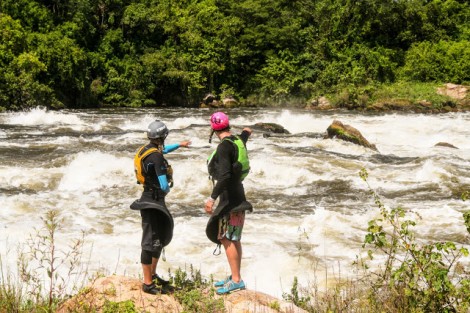
The next morning we set off. Instantly the water grabbed us and dragged us downstream around the corner. The waves and boils were that much bigger from water level than looking down from the bridge. Anxiety was high, the last trip had two rafts had flip in the first 5 minutes. Everyone was on edge. The long rapids flow into large pools inhabited by hippos and crocs. Swimming is not a very wise thing to do.
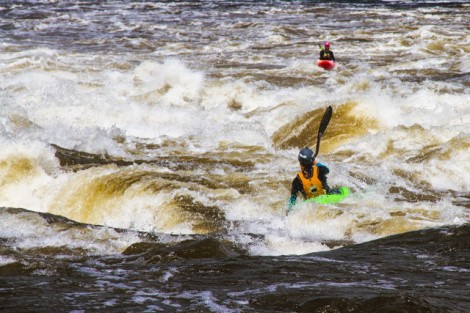
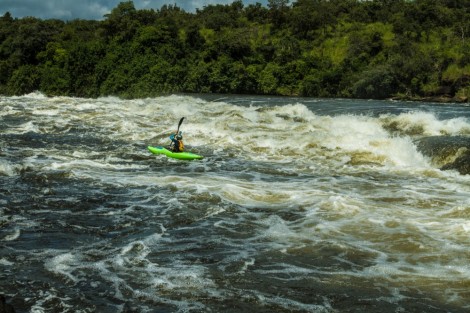
The first day was short with Anton knowing a lot of lines. Every flat pool we (Anton Immler, Mike Dawson & Martina Wegman) jumped out of our kayaks onto the back of the raft to avoid run ins with Crocs. We were then launched back into the river just above rapids to run first and act as a probe checking out lines and looking for ways down the maze of holes and waves.

For Camp we choose an island right above a rapid named Hippo Walk. An island is safer from the big 5 African beasts but more likely to be home for Hippos & lurking crocs. Pete, Alex, Davey & Anton went straight into the bush to check for signs of life before giving us the all clear.
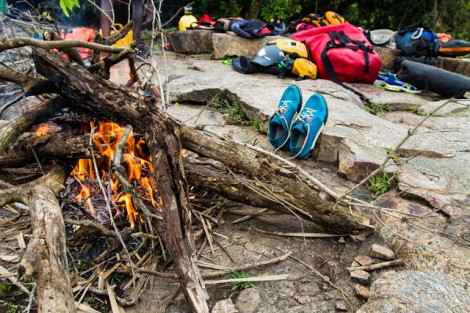

Day two was my favorite day as it was almost continued whitewater, meaning we did not had to stress to get in and out of the rafts and were less likely to run into hippo’s and crocs as they mostly hang around the flat pools.

Day 3 had four massive rapids. Puzzle, Vanguard, Vidiot & Supernova awaited us down stream. All have lines but the share width of the river means scouting without a helicopter is impossible. Roping rafts & running surgy chicken shoots were the order of the day.

Day 4 was the crux. A blow out here, a flip, a swim, any mistake could be deadly sending us down the wrong side of the river or worse into Murchison Falls.

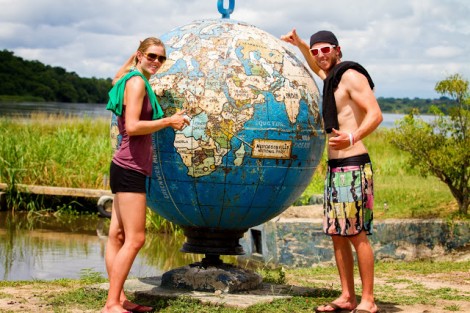
After 4 days we survived and completed another successful decent down the Murchison falls section. 10 people, 85kms, countless rapids, 1000′s of hippos, 6 crocs and no close calls!
Here is a little 1 min. video of the trip:
Thanks to This is Africa adventures & the entire crew for making this happen.
www.tia-adventures.com
This months coaching dispatches will look at activity posture. Good posture is undoubtedly the key to whitewater kayaking. Without it, it’s so difficult to keep your balance or take good effective paddle strokes, both fundamental!

Here I am sat right into the back of the seat, sat upright and then leaning slightly forwards from my hips, careful not to hutch over, moving my centre of gravity just past my seat towards the bow of the kayak.
Although it’s easy to have the correct posture on flat water it can be harder to maintain this posture if your core strength is a little weak. Any core exercise such as the plank help but the strength will build with time in a boat, therefore you might notice good posture at the beginning of the day but it becomes worse over time.
It’s a lot harder to maintain this posture when the river becomes 3D and you are running drops and slides or when the boat is accelerating.
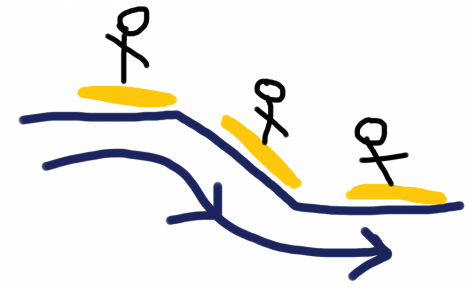
This sketch shows what happens when you don’t anticipate this change in environment. You’ll notice that the paddler doesn’t actually lean back but the boat moves relative to the slide without the paddler, when the kayak straights up at the bottom the paddler is leaning back.
We must anticipate the white water and actively move our posture forwards so its stay forwards relative to the boat. The main difference to spot, although there are others, is that as the sketch paddler reaches the bottom, they have good posture for the unstable water, such as a stopper, so therefore you have your balance and can take effective strokes away.
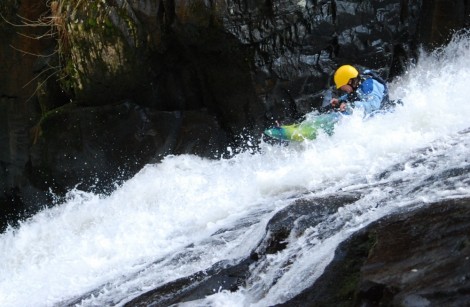
Here you can see a student on a steep creekin’ course in Wales working on her activity posture. She is moving her whole body forwards to anticipate the stopper at the bottom and below we can see Palm Team paddler Tom Parker showing great posture on holiday in Switzerland.

This weekend I’ll be running a free clinic at Gene17 Rivers Source Event themed around posture, it’s that much of a big deal!
As September started it was team changeover time for the Kayak Borneo expedition. Myself, Tom Haywood and Nick Bennett headed out to join Jonny Hawkins to carry on the good work from the last team. We decided to start things off with the best river the last team found, the Telekosang, which was jungle steep creeking at its finest.

Jonny on the excellent Telekosang.
We soon headed out for our own exploration in an area called the Mulu National Park which is in the south of Malaysian Borneo in the a region called Sarawak. The park in an area where no logging is allowed, which we sadly found out is something quite rare in this part of Borneo. Maps suggested an epic gorge, but we didn’t count on was the epic journey to get there. The only way to get anywhere in Borneo is by logging road or boat, we had to do a combination of both. Luckily Malaysia is home to some of the kindest people I have ever met, and a local agreed to come with us on our journey, house us in his village, en route, and translate for us, just because he was a kind chap.
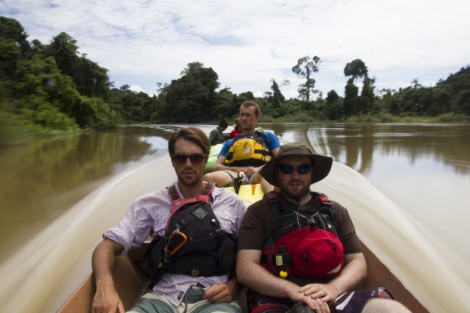
The long journey into the Tutoh river.
After 4 days of travelling, we finally reached the get on to the Tutoh river and we quickly learned that the river was in flood. We a fair amount of trepidation and some large brown (literally) rapids we came to our first camp, which was where the adventure really began.

The upper reaches of the Tutoh river, in deep virgin rainforest.
During the night it began to rain, and rain, and rain. We had pitched our hammocks about 3 m from the water line, after about an hour we were about to get swept away and we had to leg it. We had to scramble up the bank a further 10m where we felt sure we were safe before setting up our hammocks again in the pouring rain and the dark…oh and the snakes. Turns out the only place we could find to put the hammocks was also a home to our slithery friends, but they were the least of our concern as the river was still rising rapidly and we were getting worried it would get to us still. After a sleepless night the river had receded again, however we estimated that it had risen 10m in just shy of 2 hrs, which is a scary thought.
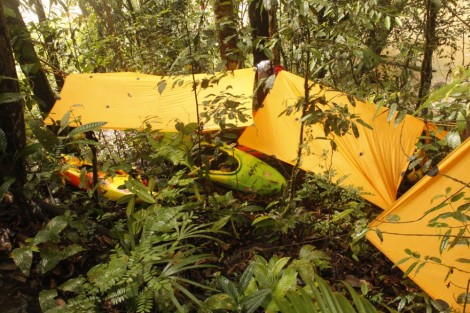
Terror camp
Carrying on the next day with an even higher river, the river constricted to a pour over and the mother of all whirlpools and boils below. Seeing whole trees float down, disappear, the rocket back out of the boils like the proverbial sword from the lake make us a bit jittery about running it. Seeing as there was no portage possible and a walk out would be equally as unlikely, we could do nothing else but sit on the rock, sharpen our parang (not a euphemism), and wait for the river to drop. Eventually we decided to roll the dice, this wasn’t something we took lightly, but it was a decision that had to be made, and we chanced the whirlies. Luckily all went well and we soon found ourselves heading downstream again. We eventually came across a village and experienced what was the highlight of the trip for me. The people lived a very traditional lifestyle, hunting with poison blowpipes, not wearing shoes (or much clothes at all) and most of all being exceptionally hospitable. They housed us, fed us wild boar, let us have a go with their blowpipe (again not a euphemism) and most importantly told us about the grave danger we were about to paddle into. Mulu National Park is famous for the BBC series Planet Earth being film ed there…the cave episode. An apparently the river downstream in the “inescapable flooded gorge” disappeared under rocks and into these famous caves at several places. With this knowledge and what we experienced upstream we decided that we would have to try and skip the gorge.

Watch out wild boars,traditional hunter with blowpipe and bayonet.
We managed to paddle to the next village, via and awesome playwave, which was connected by a logging road and get a lift around the gorge to the other side where we paddled out along the long flat river of the Tutoh back to civilisation. We were disappointed about not being able to paddle the gorge, however our decision was vindicated by the sad news that two locals had fallen in and drowned in the gorge that very day.

Everybody loves a surf
We made our way back to Sabah (the Northern State of Malaysian Borneo) to check out another promising area called Limbang. With less jungle naivety we set about another multi-day trip down the Trusan river. After a brief scare when a crocodile jumped in the river right next to us (we were still pretty naive) the river opened up to an absolute gem, with a particular steep section that definitely got the blood pumping.
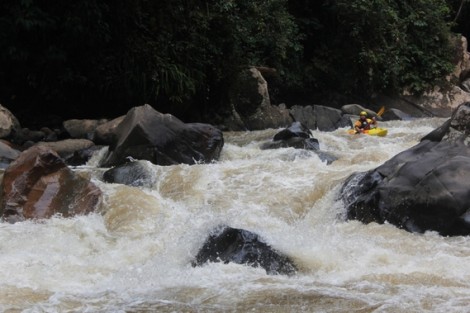
An excellent steep section on the Trusan river.
Our time in Borneo was soon up and we had to travel back to the North to again welcome in the new team and fly back. A truly eye opening trip, with more wildlife, culture, colour, terror, and water than you can shake a stick at. This trip would not have been possible but for the kindness and generosity of the Malaysian people, who bailed us out every time we got stuck, lost, hungry or just out of our depth, and it is something that will stick with me for a long time.

People of Malaysia, we salute you!
Words: Patrick Clissold
Photos: Patrick Clissold & Jonny Hawkins
So you have done your safety briefing, showed your group a paddle and even told them how to use it. You launch them on the water and then undoubtedly they start to spin in circles. Fast forward 10 mins and they are still weaving around, struggling to make any forward progress, with the only difference being, they are now totally dishearten that they cant do, what is in their mind the easiest skill; going forwards!
I can still remember my first day in a kayak, I had been on the river for all of 1 minute, when our instructor said to the group “O.K, follow me” and then continued to paddle up the flow in an effortless style, boat staying dead straight. So like perfect students we followed on in one straight line. Well, that is for the first 2 meters! I remember thinking, my boat must be broken, it wont go straight. So I nagged my instructor, who kindly gave me the advice to keep paddling on the same side until it comes straight again. So for the next hour I stuck to this advice and proceeded to paddle as hard as I could on one side, so that the boat would hopefully come back straight again. This had 2 outcomes, the first was that no matter how hard I paddled on that side, the boat would still spin out. The other was after lotʼs of effort the boat would temporarily come straight. How strong my instructor must be I pondered?
Itʼs really important that we give our students a good start in our sport, other wise who knows what kayaking prodigies we could be putting off? So the following article is a study on teaching our beginners how to paddle in a straight(ish!) line in whitewater/club kayaks. As coaches we know that forward paddling is a really difficult technique to fully master, and top athletes spend years honing their technique. However our beginners don’t have to be masters, they just need to get from A – B and enjoy themselves, we can save the really nitty gritty for a later time in their kayaking careers.
So first thingʼs first letʼs look at why the kayaks we often put our beginners in spin so easily. Imagine sitting on the bottom of a clear lake, looking up to the surface. On the surface are two kayaks and a beach ball, one of the kayaks is a racing K1 and the other is a typical club boat. The K1 would look like a long thin shape, where as the club boat looks like a much wider rectangle. Now think about that beach ball with itʼs round shape. A beach ball will turn with complete ease, but try to push it forwards and it wont go very far! How ever a K1 wont turn eaisly, but give it a push and it will go a mile! So our club boats sit somewhere between this, but in somewayʼs is very similar to the beach ball, the slightest push and they want to start spinning.
The first thing I do when I get my students on the water is to positively encourage them to spin their kayaks in both directions. This is for three reasons, the first is group control. If they are spinning then they are staying near by. The second is because itʼs something I know they will be able to do, so they are getting instant success which in turn leads into motivation to want to do more. The third is because in a few minutes when we start looking at moving forwards its going to be really, really useful!
Progressing on from spinning is usually paddling forwards, and by the fact that they can already turn in both directions we would have thought that going in a straight line would just be a balance between this? But it never quite seems to work out like that. Often we watch a beginner paddling forwards, and we will see that their boat starts to uncontrollably wonder off in one direction or another. Our beginner then tryʼs to counteract that by eitherpaddling on the same side over and over (where the boat usually wins which usually results in the tail spinning out) or they put a back stroke in and waist their hard earned momentum.
So something is different when we paddle forwards compared with when we are static. Something that causes a beginners kayak to get a mind of itʼs own and turn off line.
Think back to the times where you have been paddling forwards, then stopped paddling and allowed your boat to just drift. It never just carries on straight, it will always want to turn off in one direction or another. Several things cause this to happen, the first is that more than likely your last stroke has encouraged your boat to start turning. Another might be a current, or the wind. However, even in dead still conditions, with you trying your hardest to leave the boat balanced, it will still eventually spin out. This is also true to when we are paddling forwards we are in a constant balancing act, making small adjustments with our paddles to keep us going straight.
The explanation to why this happens is relatively complex with several effecting factors. Imagine paddling forwards, the bow is the part cutting through the water, whereas the stern is just following. As a result of this, the bow is quite well anchored, whereas the stern is a lot more free to slide about, that is the first part of the puzzle. The next is that when our boat is static, the turning point or pivot point is usually under our bum, which is also where the bulk of our mass is. However, when we start to paddle forwards the turning point also moves forwards, but our mass stays in the same place. As a result of this when we stop paddling our mass (us) wants to keep going and the easiest way for it to go is one side or the other of the pivot point. When this happens the back end of the boat pushes to one side and skids out. You can hear and see this happening at the tail of the boat (a whoooshing noise and bubbles), but you may also notice that the front of the boat is not skidding its still pushing through the water. Thatʼs the point when our mass over takes the pivot point.
As a little class room example try pulling a pencil by its end along a desk. You should find that the pencil just follows. Now try pushing it by its end along the desk. Harder? So as we get better at kayaking we learn to pull our kayak along with good forward strokes and any chance of our body mass over taking the pivot point is soon fixed with a tweaked forwards stroke.
Going back to teaching our beginners, we are all familiar with the ʻSweep strokeʼ technique, which is undoubtedly a good technique for turning kayaks in a static setting. How about a technique for turning a kayak on the move? Or even better yet, a technique for correcting a kayaks direction on the move? A sweep stroke sort of does this, but what we really need is a refined version that is tailored to do the job, and is easily accessible to someone with the most basic of skill sets.
So going back to that paddle briefing at the start of the day I like to show beginners two areas on the kayak. The power area and the turning area. The power area is located from as far forward as they can reach, to about mid thigh. Whereas the turning area is located from their hips to as near the stern (tail) of the kayak as they can reach. If they want to use the power area then the paddle is near vertical, and if they want to use the turning area, then they need to flatten the paddle and sweep as much water as they can and squeeze this into the stern of the kayak, in a rainbow/arc like shape. Another way of explaining this could be to sweep as much water under the stern as they can. The important bit is that the paddle ends up as far back as they can reach (while maintaining a normal posture), this is where the turning really happens.
This should be followed with a good example of the skill in use, both in power mode, and then demonstrating the turning mode in context. e.g when the kayak starts to go off line.
The bellow photos show the ʻTurning modeʼ in use. Notice the arm closets the water is fairly straight to give the arc shape good reach. Once the paddle has swept the water under the back of the boat it is then removed, the idea is not to then use it as a rudder. At this point we can either repeat the stroke to turn more, or if the direction is correct then forwards paddling can continue.
Head on Demo
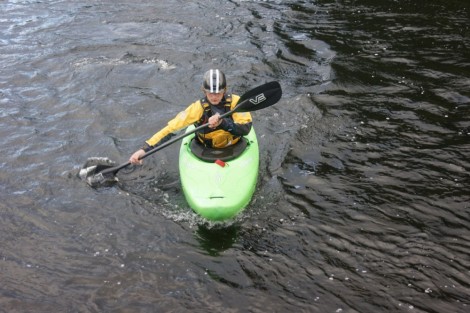

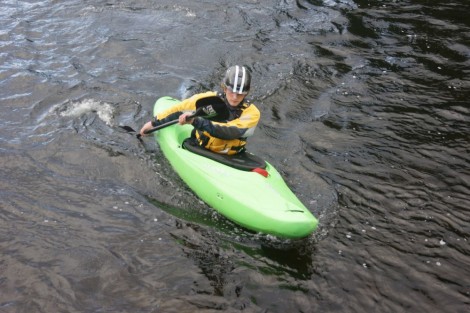

A good question to ask your beginners could be “Where is a sailing boat is steered from?” This will hopefully get them thinking about the rudder being at the back of the boat, and will help them to visualize the correct kind of images.
Now that the learners have an awareness of the two areas of the kayak, and how they can be used, we need to create an environment that they can practice and succeed within. At this point there are many different excises or challenges that could be set, and the only limitation is your imagination. To get the ball rolling here are a few ideas:
Follow the leader - Good for the more visual learner as they get to see more demonstrations.
Kill the Spin – Have your group spinning in circles, and on your command they are to kill the spin with the above talked about stroke – make sure they are not using a backwards stroke as this could later be used in their forward paddling.
Slalom course – Save your milk floats and gather some string! By setting a fairly liner slalom course that weaves its way up your lake/river your beginners will haveto make subtle adjustments to their direction, but principally keep themselves going forwards. You can hang back, observe, give feed back and answer any questions.
Open practice – Give your leaners some time to go work it out and experiment. This suits self motivated groups.
A – B – A simple paddle from this side to the other, could be enough for your learners to start experimenting, and getting the hang of that straight(ish) line.
To conclude the article, remember the two zones of the boat, the power zone and the turning zone, get your group to understand these and how they can access them. Hopefully you have found it useful and will take something ʻforwardʼ from it, so that the next time your out teaching some novices, you will have them paddling in straight(ish) lines in no time.
Cheers,
Jake
This year I decided to go check out the Adidas Sickline Kayak World Championships. Its not the first time I have tried to go to Sickline, I nearly went there two years ago but ended up breaking my collarbone about 2 weeks before the race which put a bit of a damper on that plan. Then last year it was too far to travel but this year I was working in Voss over the summer which is a lot closer to Austria comparative to New Zealand.
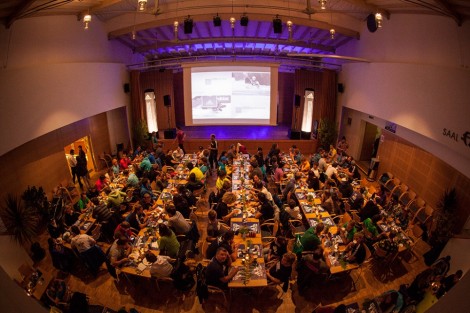
This year was a pretty good year to attend Sickline because it is only the 2nd year ever that the race organisers have allowed the women to race on the Wellebruke section of the race course, formerly they were only allowed to race on the section starting at the minus 1 rapid through champions killer and down through a grade 2/3 section. Considering that this year 4 men had DNF results in the race 2 of which were in the top 26 final and only 1 women had a DNF (and she went on to get the 2nd fastest time in the second round) and Nouria Newman’s time in the final would have placed her number 11 in the men’s superfinal, I think its a little bit arrogant of the race organisers to say that only the top 3 or only the top 5 fastest women are good enough to paddle the Wellebruke section. From my experience women are just as rational and level headed as men when it comes to making decisions on what they can and can’t paddle.

Nouria Newman ripping it up on the racecourse
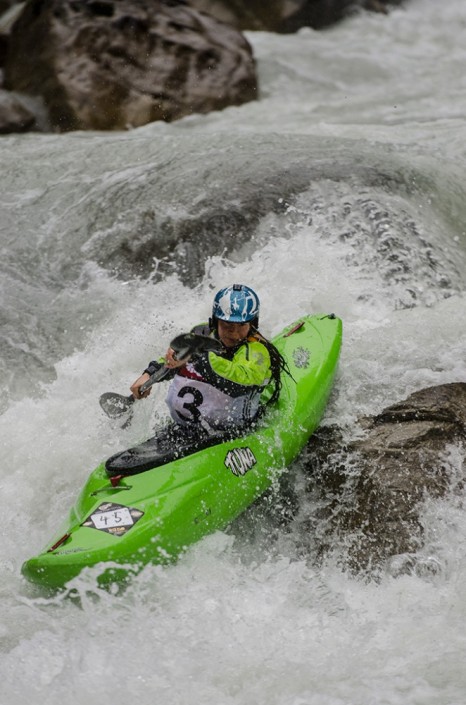
Keeping warm and dry on the glacier melt in my Palm drytop

Martina styling it in some new Palm gears she picked up from the paddle expo

Safety first.. The Austrians love safety and tight wetsuits

Me lining up the boof at champions killer

Finalists
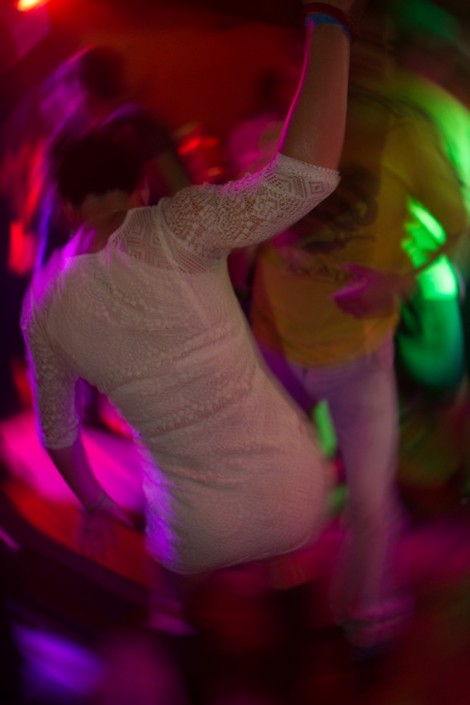
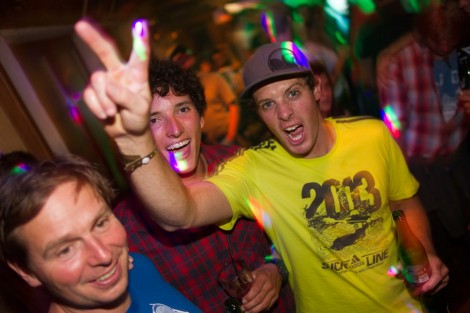
Cheers Olaf and the race organisation crew for and awesome event!





























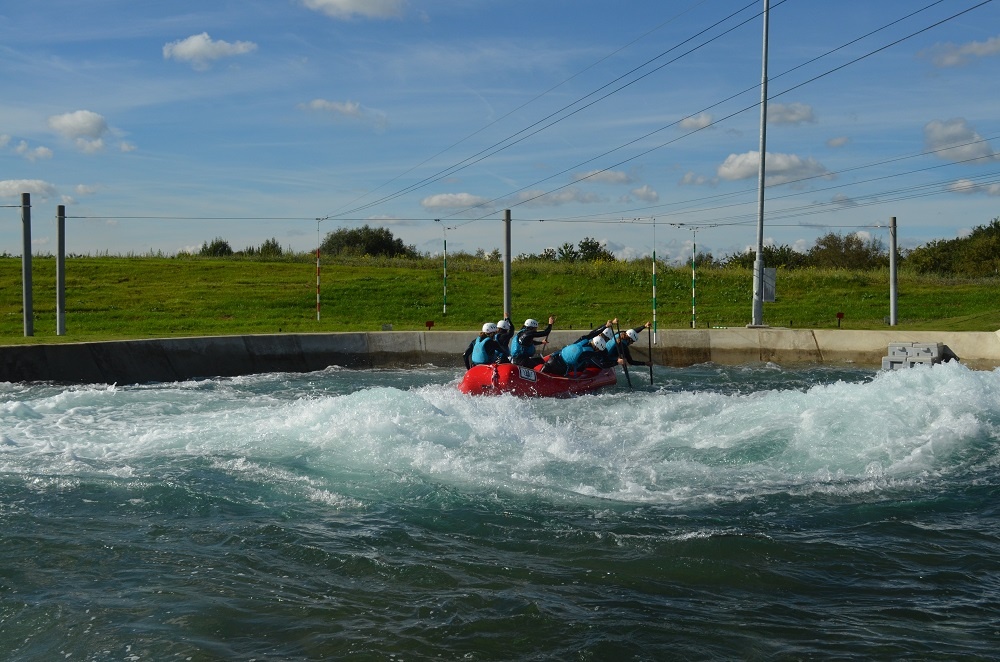

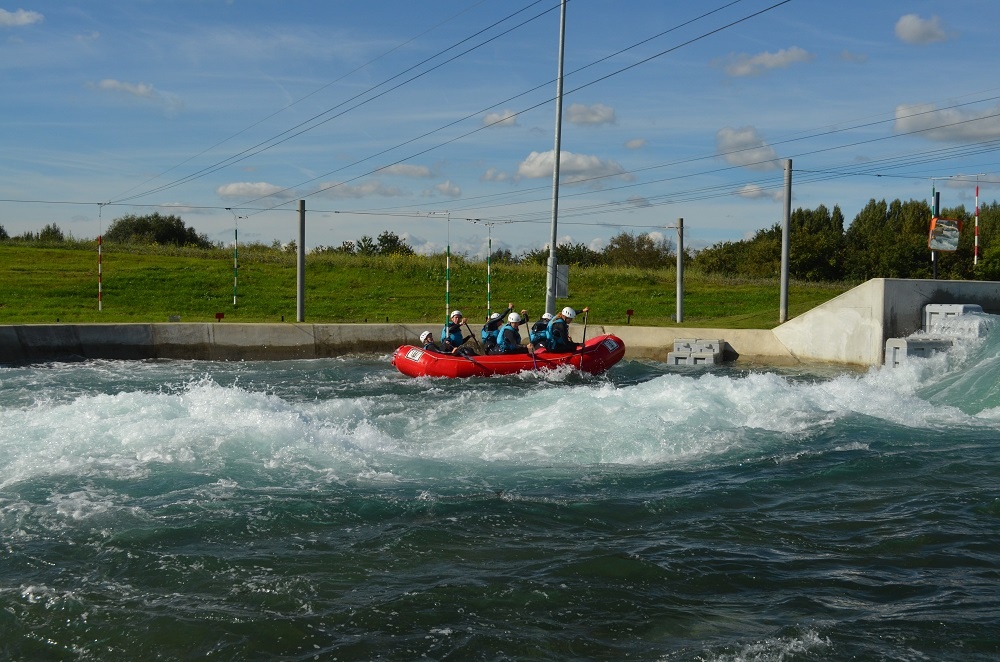
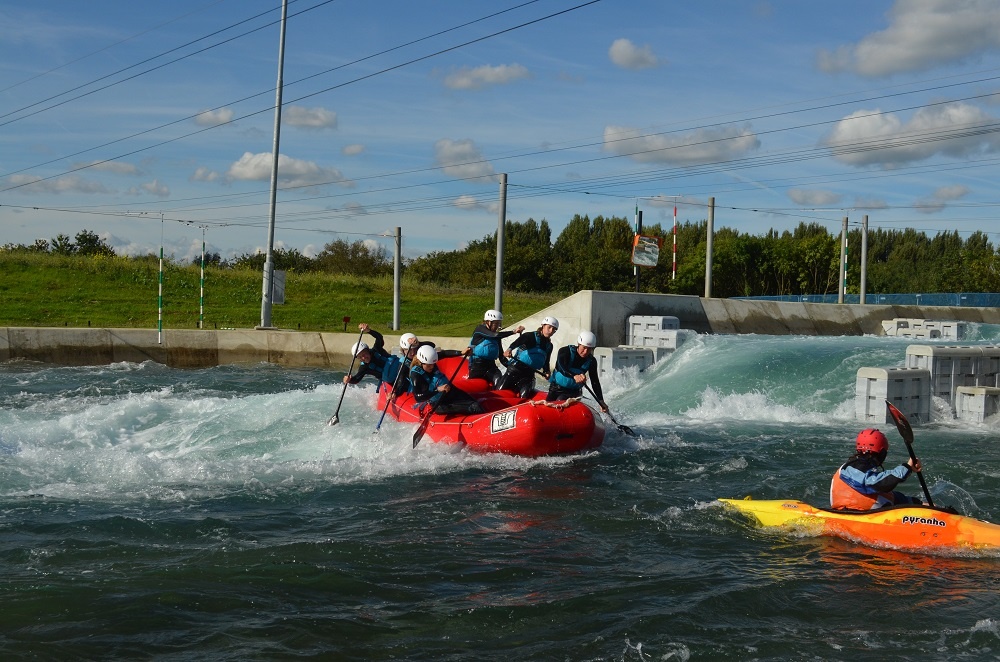
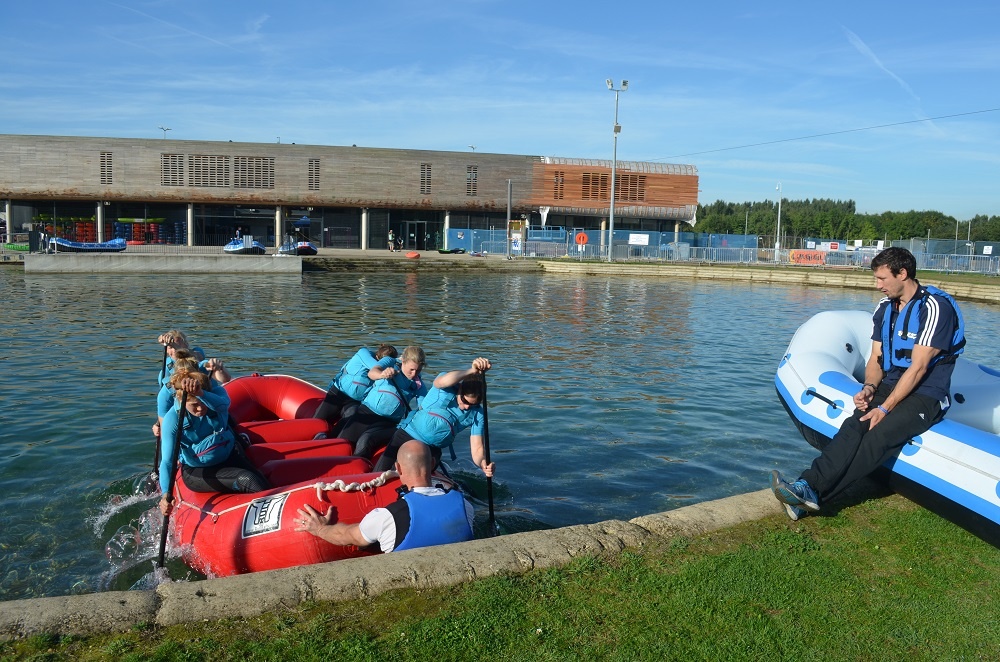
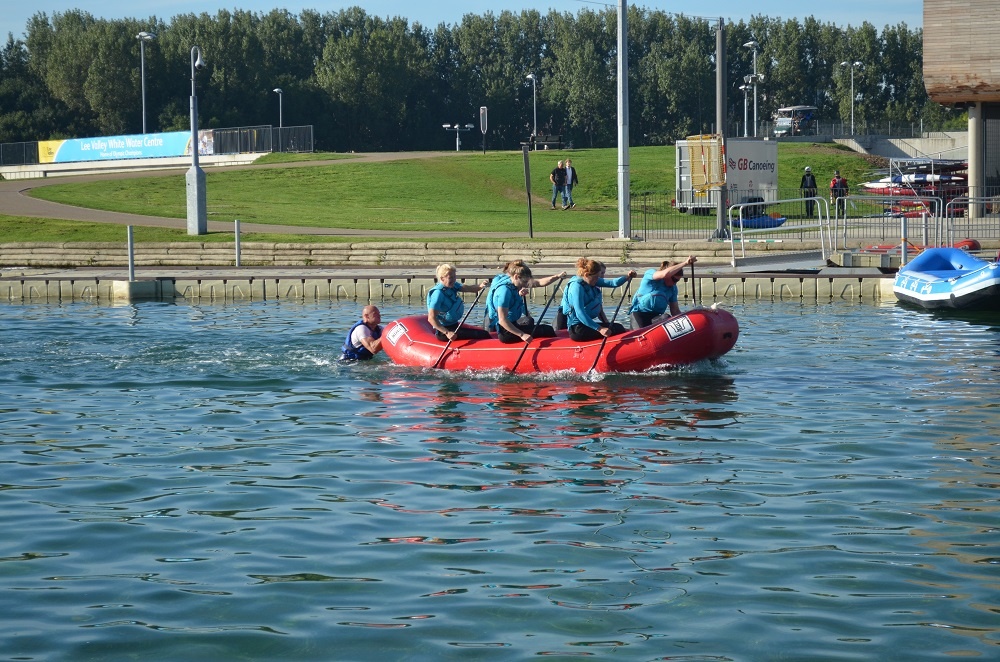
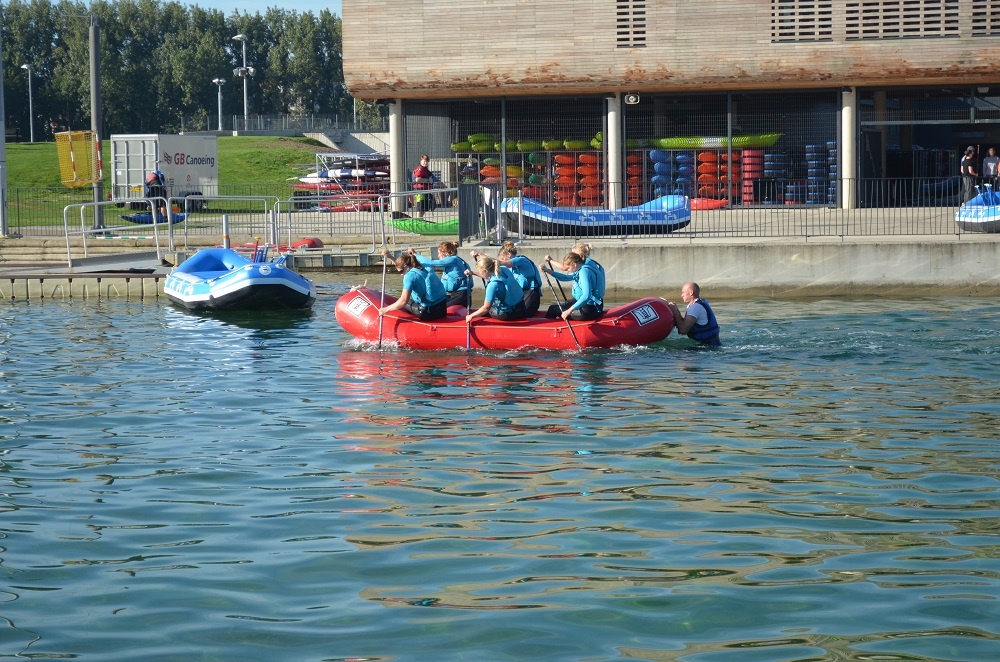
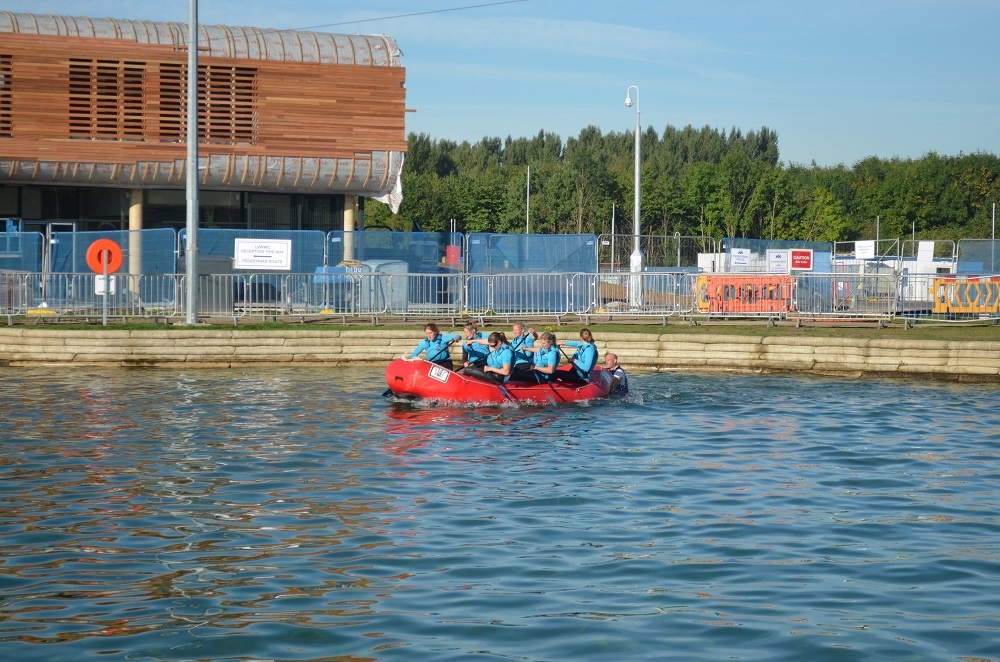

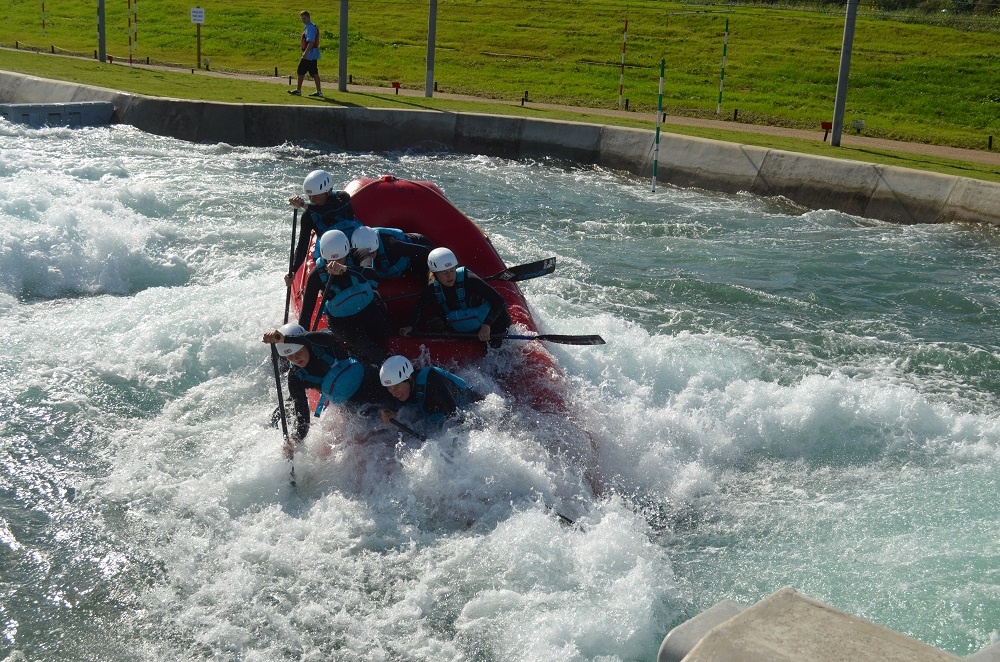

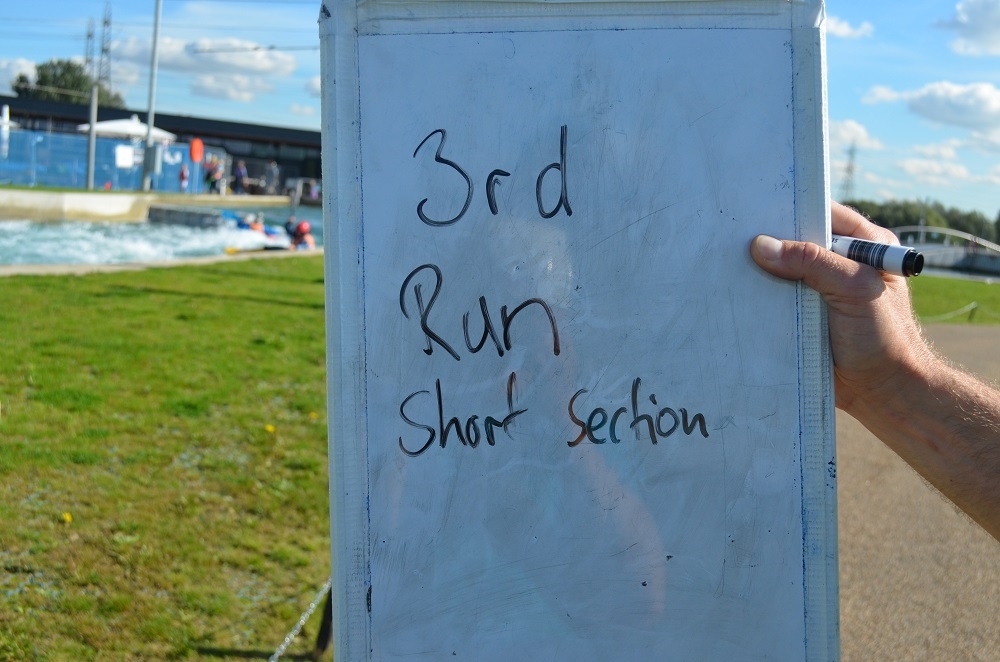
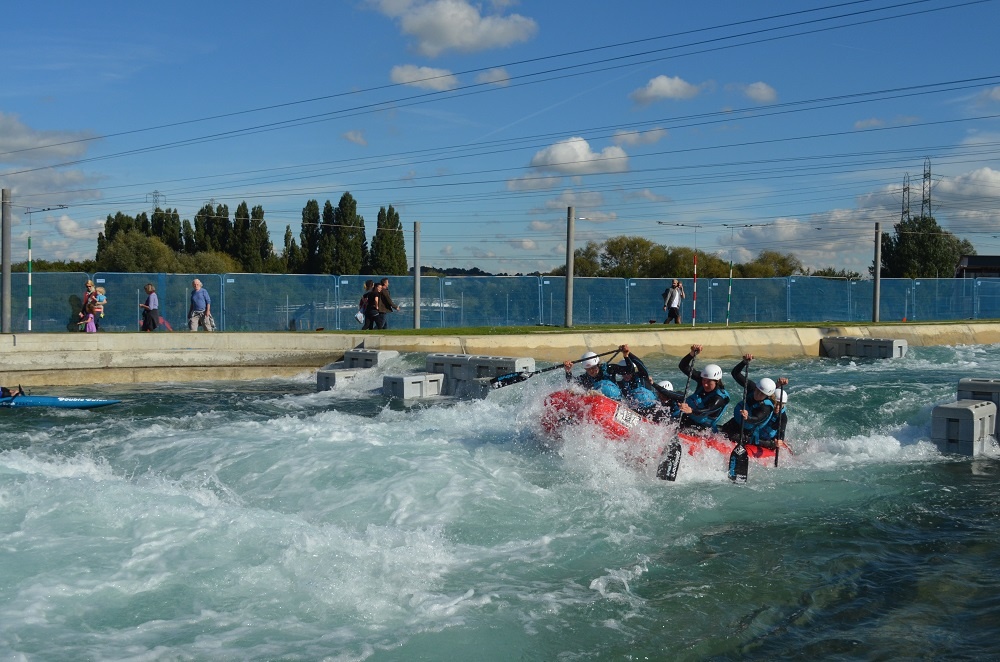
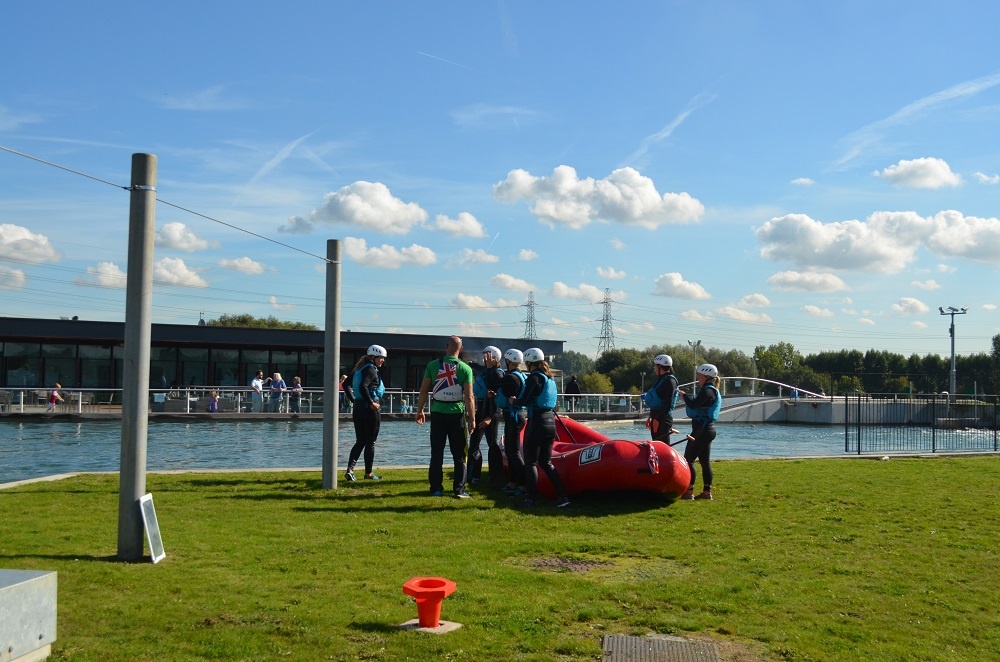

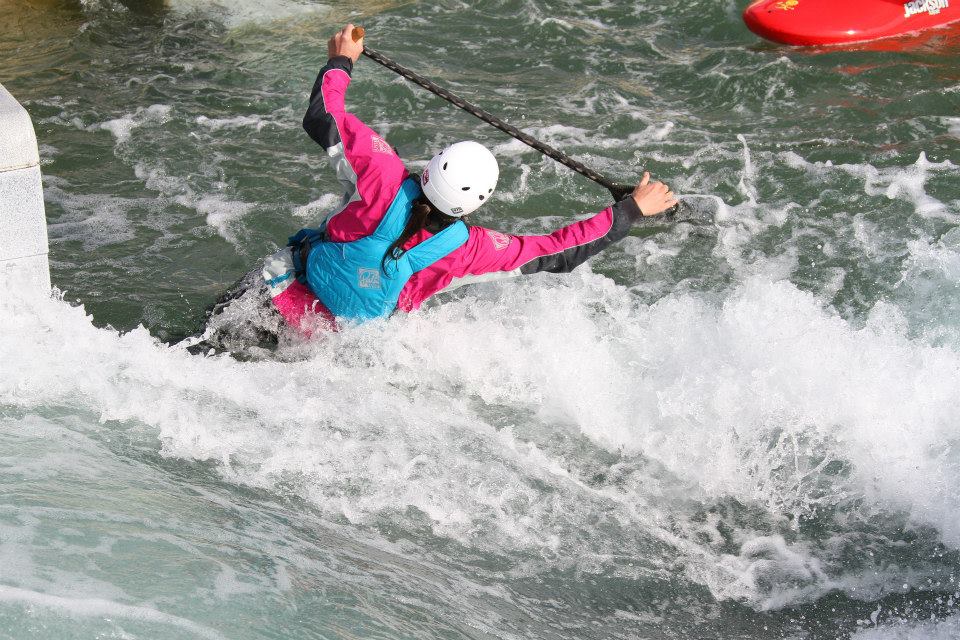
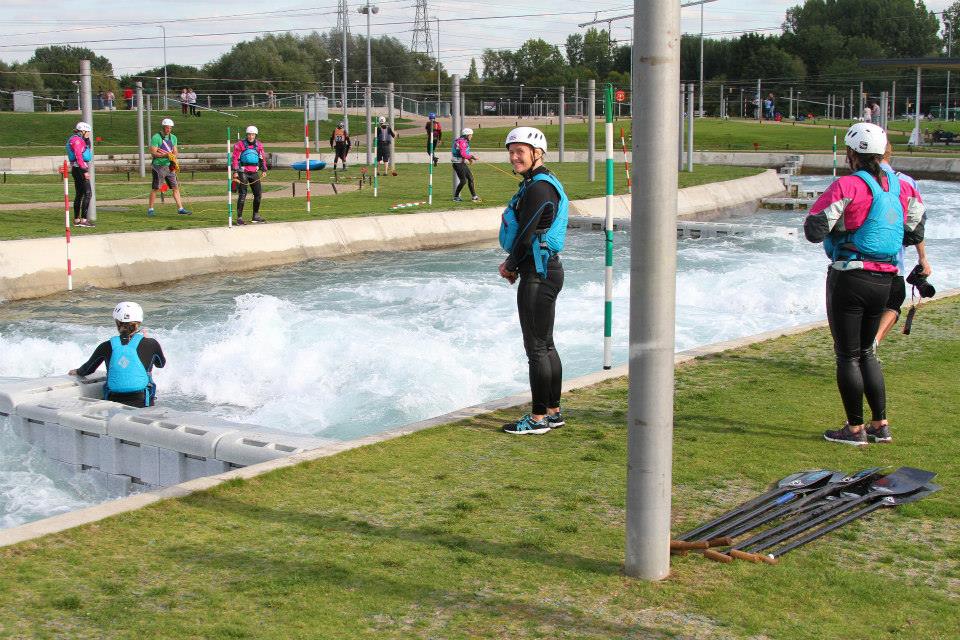
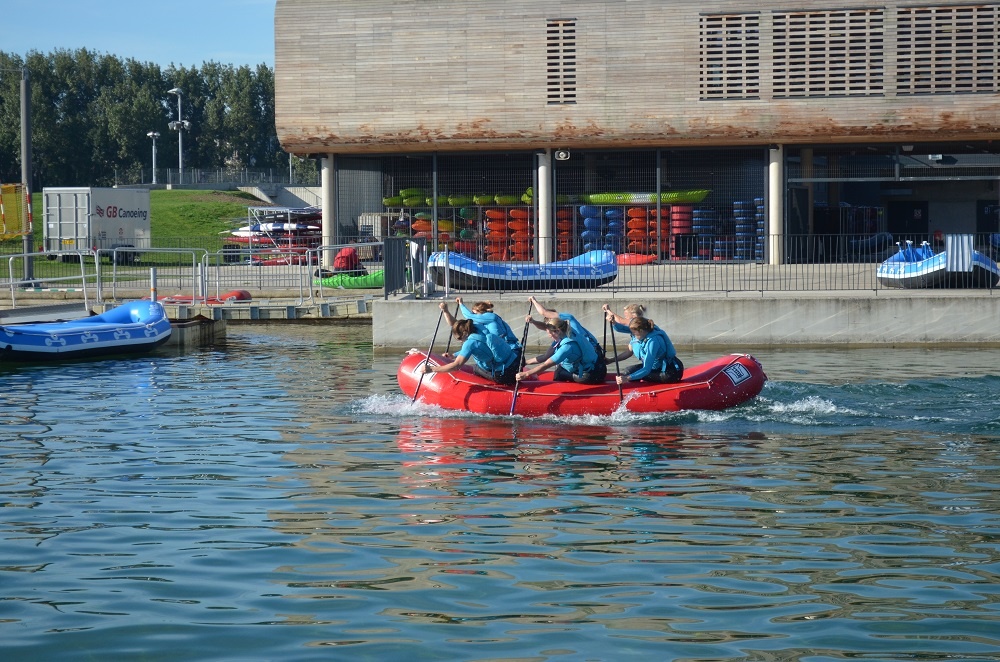
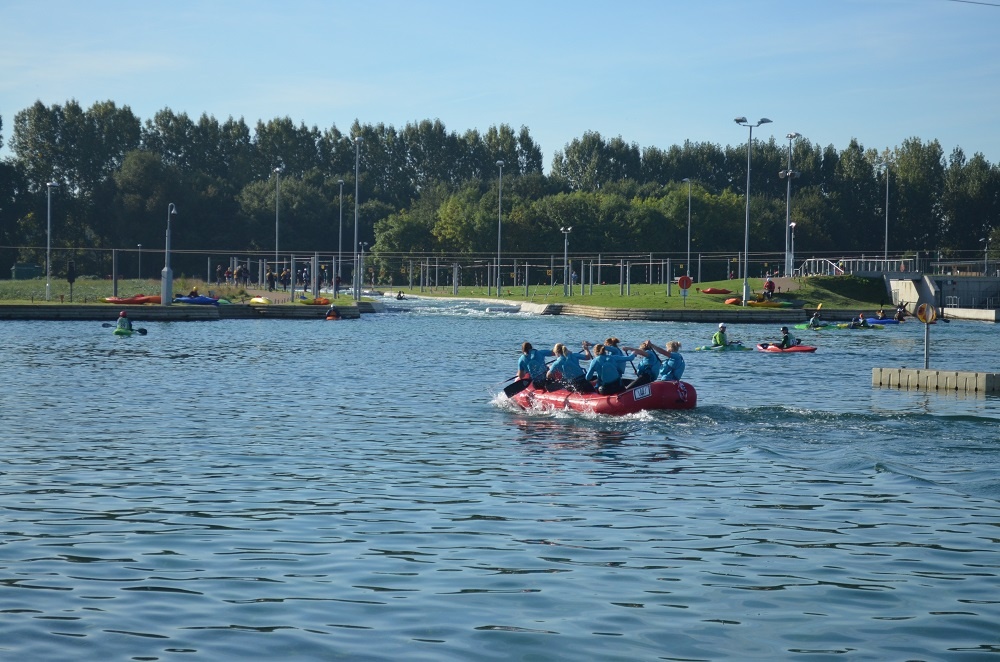









 her for most of the festival.
her for most of the festival.





















































